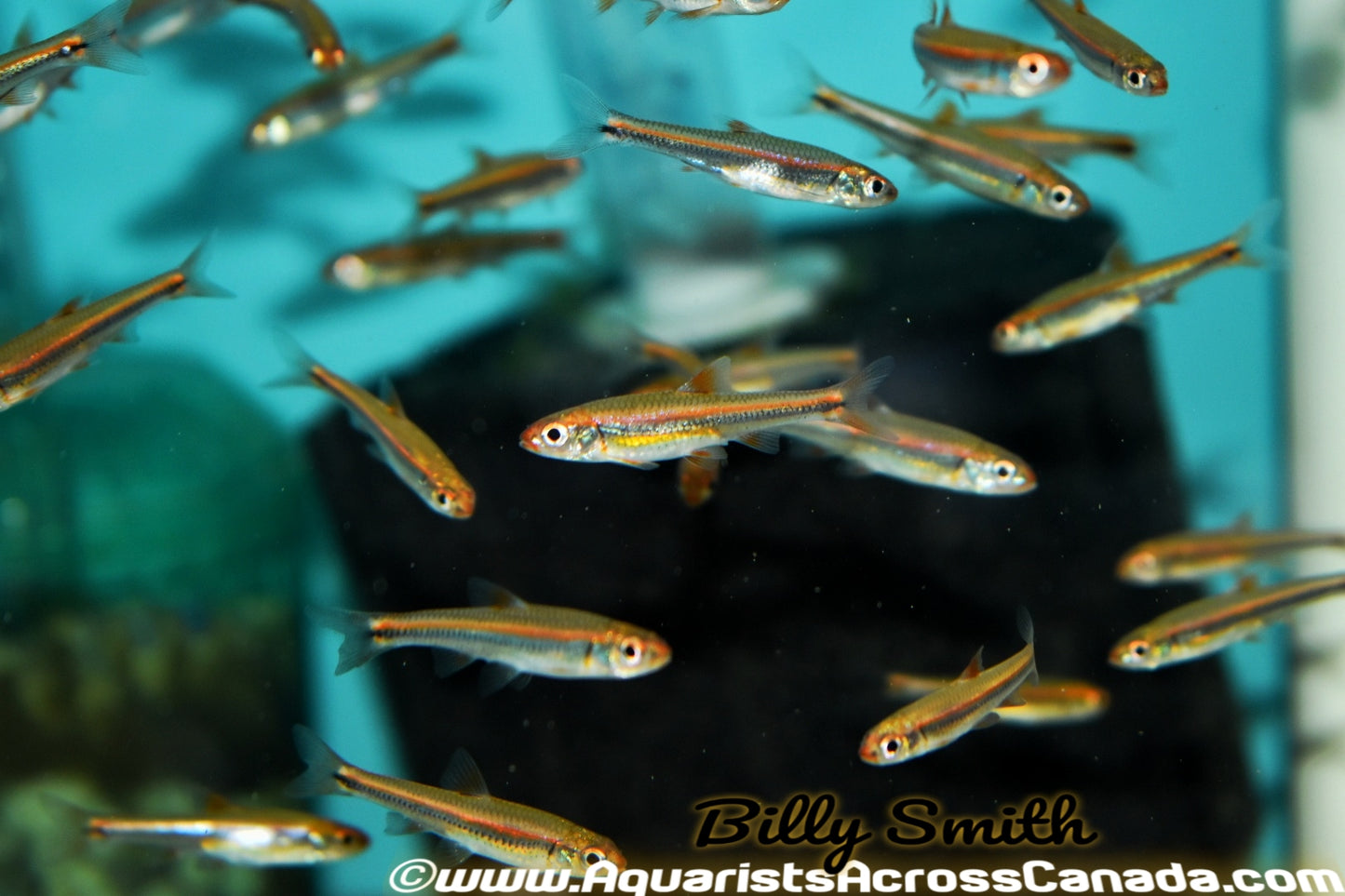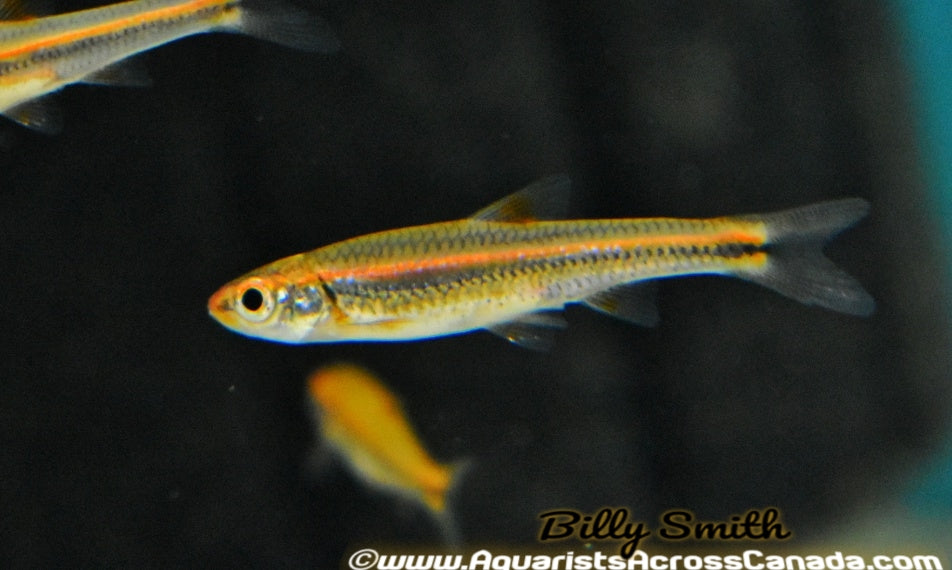SKU:1111
RAINBOW SHINER (Notropsis chrosomus)
RAINBOW SHINER (Notropsis chrosomus)
17 in stock
Couldn't load pickup availability
Common name: Rainbow shiner, Alabama rainbow shiner
Scientific name: Notropsis chrosomus (Jordan, 1877)
Origin: This is a North American species and has been recorded from several states in the south east of the USA, including Alabama, Georgia and Tennessee. The species was originally endemic to the Mobile River drainage, but has since spread elsewhere.
Size: Reaches a maximum size of around 8cm/3", but usually tops-out at 5cm/2".
Diet: The Rainbow shiner is described by some as a 'drift feeder'. It feeds on small food items such as invertebrates and plant matter drifting past in the current. Captive fish will accept frozen foods and flakes.
Water: Unfussy and adaptable cool water fish suitable for room temperature aquaria down to about 10°C.
Aquarium: These stunning fish have outstanding potential as an aquarium fish.
It's hard to explain how they look in the flesh. The fish have an underlying reddish base colour with lots of patches of iridescent blue sparkles across the skin and fins. The patterning is variable and the iridescence changes with reflected light. LED lighting would be worth a shot as it may help enhance their highly metallic coloration, which has to be seen to be believed.
They're peaceful fish and need to be kept in shoals, which would currently make them an expensive outlay, as they're new to the hobby and fast-becoming highly sought-after. Go for at least six of them and try to get a mixture of males and females to ensure that the males have potential mates to display to and rival males to show off against.
They leave plants untouched and some of the aquascapes we saw at Interzoo featured these fish in nature aquariums. However, they are found in small clear streams over gravel and sand bottoms, mainly around riffles and pools, and appreciate flow. If you want to go for a biotope you'd be better off creating a slow-moving stream or riffle habitat using sand, gravels of various sizes, pebbles, water-worn rocks and pieces of driftwood.
Breeding: Wild fish are said to spawn in early summer - around May or June. They're said to be egg-scatterers which have a tendency to eat their own eggs, so if you spawn them you'll need to figure out a way of preventing egg loss.
Sexing: Males are slimmer and more brightly coloured than females. During the breeding season, the head, back and bases of fins turn purple with a silver stripe along the side of the body. Both sexes develop tubercles on the head and body.
Legal status: Although North American, we believe this species to be legal in the UK. It is classed as a coldwater fish so must be imported under the appropriate licence, as imports are not allowed using a DOF 8T tropical fish import licence.
Availability: These first started to arrive in the UK in small numbers in late 2009. We photographed these ones at the Interzoo trade show in Germany where they were drawing admiring glances after being used in many different aquascapes. Prices are now starting to drop a little, but they remain rather expensive. We reckon these are going to be really popular when prices become more reasonable.
https://www.practicalfishkeeping.co.uk/features/rainbow-shiner-notropsis-chrosomus/
Share




